-
Lancet Market, By End User
-
\r\n\r\n\r\n7.1 Introduction
-
\r\n\r\n\r\n7.2 Hospitals & Clinics
-
\r\n\r\n\r\n7.3 Diagnostic Centers
-
and Pathology Laboratories
-
\r\n\r\n\r\n7.4 Home Diagnostics
-
\r\n\r\n\r\n7.5 Other End Users
-
\r\n\r\n\r\n
-
\r\n\r\n\r\n8 Global Safety
-
Lancet Market, By Region
-
\r\n\r\n\r\n8.1 Introduction
-
\r\n\r\n\r\n8.2 North America
-
\r\n\r\n\r\n8.2.1 The U.S.
-
\r\n\r\n\r\n8.2.2 Canada
-
\r\n\r\n\r\n8.3 Europe
-
\r\n\r\n\r\n8.3.1 Germany
-
\r\n\r\n\r\n8.3.2 France
-
\r\n\r\n\r\n8.3.3 UK
-
\r\n\r\n\r\n8.3.4 Italy
-
\r\n\r\n\r\n8.3.5 Spain
-
\r\n\r\n\r\n8.3.6 Rest of Europe
-
\r\n\r\n\r\n8.4 Asia-Pacific
-
\r\n\r\n\r\n8.4.1 Japan
-
\r\n\r\n\r\n8.4.2 China
-
\r\n\r\n\r\n8.4.3 India
-
\r\n\r\n\r\n8.4.4 Republic of Korea
-
\r\n\r\n\r\n8.4.5 Rest of Asia-Pacific
-
\r\n\r\n\r\n8.5 Middle East & Africa
-
\r\n\r\n\r\n8.5.1 UAE
-
\r\n\r\n\r\n8.5.2 Egypt
-
\r\n\r\n\r\n8.5.3 Saudi Arabia
-
\r\n\r\n\r\n8.5.4 Rest of Middle East & Africa
-
\r\n\r\n\r\n
-
\r\n\r\n\r\n9 Competitive
-
Landscape
-
\r\n\r\n\r\n9.1 Pricing of Lancets
-
\r\n\r\n\r\n
-
\r\n\r\n\r\n10 Company Profile
-
\r\n\r\n\r\n10.1 F. Hoffmann-La
-
Roche AG
-
\r\n\r\n\r\n10.1.1 Overview
-
\r\n\r\n\r\n10.1.2 Product/Business
-
Segment Overview
-
\r\n\r\n\r\n10.1.3 Financial
-
Updates
-
\r\n\r\n\r\n10.1.4 Key Developments
-
\r\n\r\n\r\n10.1.5 SWOT Analysis
-
\r\n\r\n\r\n10.2 Becton, Dickinson and Company
-
\r\n\r\n\r\n10.2.1 Overview
-
\r\n\r\n\r\n10.2.2 Product/Business Segment Overview
-
\r\n\r\n\r\n10.2.3 Financial
-
Updates
-
\r\n\r\n\r\n10.2.4 Key Developments
-
\r\n\r\n\r\n10.2.5 SWOT Analysis
-
\r\n\r\n\r\n10.3 Terumo Medical Corporation
-
\r\n\r\n\r\n10.3.1 Overview
-
\r\n\r\n\r\n10.3.2 Product/Business Segment Overview
-
\r\n\r\n\r\n10.3.3 Financial
-
Updates
-
\r\n\r\n\r\n10.3.4 Key Developments
-
\r\n\r\n\r\n10.3.5 SWOT Analysis
-
\r\n\r\n\r\n10.4 Bayer AG
-
\r\n\r\n\r\n10.4.1 Overview
-
\r\n\r\n\r\n10.4.2 Product/Business Segment Overview
-
\r\n\r\n\r\n10.4.3 Financial
-
Updates
-
\r\n\r\n\r\n10.4.4 Key Developments
-
\r\n\r\n\r\n10.4.5 SWOT Analysis
-
\r\n\r\n\r\n10.5 HTL-STREFA S.A.
-
\r\n\r\n\r\n10.5.1 Company Overview
-
\r\n\r\n\r\n10.5.2 Product/Business Segment Overview
-
\r\n\r\n\r\n10.5.3 Financial
-
Updates
-
\r\n\r\n\r\n10.5.4 Key Development
-
\r\n\r\n\r\n10.5.5 SWOT Analysis
-
\r\n\r\n\r\n10.6 Sarstedt AG & Co.
-
\r\n\r\n\r\n10.6.1 Overview
-
\r\n\r\n\r\n10.6.2 Product/Business Segment Overview
-
\r\n\r\n\r\n10.6.3 Financial
-
Overview
-
\r\n\r\n\r\n10.6.4 SWOT Analysis
-
\r\n\r\n\r\n10.7 Improve Medical
-
Technology Co. Ltd
-
\r\n\r\n\r\n10.7.1 Overview
-
\r\n\r\n\r\n10.7.2 Product/Business Segment Overview
-
\r\n\r\n\r\n10.7.3 Financial
-
Updates
-
\r\n\r\n\r\n10.7.4 SWOT Analysis
-
\r\n\r\n\r\n
-
\r\n\r\n\r\n
-
List of Tables
-
\r\n\r\n\r\nTABLE 1 GLOBAL SAFETY
-
LANCET MARKET, BY TYPE, 2017-2023 (USD MILLION) 26
-
\r\n\r\n\r\nTABLE 2 PUSH BUTTON
-
SAFETY LANCET MARKET, BY REGION, 2014-2023 (USD MILLION) 27
-
\r\n\r\n\r\nTABLE 3 PRESSURE
-
ACTIVATED SAFETY LANCET MARKET, BY REGION, 2014-2023 (USD MILLION) 28
-
\r\n\r\n\r\nTABLE 4 SIDE BUTTON SAFETY LANCET MARKET, BY REGION, 2014-2023
-
(USD MILLION) 29
-
\r\n\r\n\r\nTABLE 5 GLOBAL SAFETY
-
LANCET MARKET, BY END USERS, 2014-2023 (USD MILLION) 31
-
\r\n\r\n\r\nTABLE 6 HOSPITALS
-
& CLINICS MARKET, BY REGION, 2014-2023 (USD MILLION) 32
-
\r\n\r\n\r\nTABLE 7 DIAGNOSTIC
-
CENTERS AND PATHOLOGY LABORATORIES MARKET, BY REGION, 2014-2023 (USD MILLION) 33
-
\r\n\r\n\r\nTABLE 8 HOME DIAGNOSTICS MARKET, BY REGION, 2014-2023 (USD
-
MILLION) 34
-
\r\n\r\n\r\nTABLE 9 OTHER END
-
USERS MARKET, BY REGION, 2014-2023 (USD MILLION) 34
-
\r\n\r\n\r\nTABLE 10 GLOBAL
-
SAFETY LANCET MARKET, BY REGION, 2014-2023 (USD MILLION) 35
-
\r\n\r\n\r\nTABLE 11 GLOBAL
-
SAFETY LANCET MARKET, BY REGION, VOLUME (IN MILLION) 36
-
\r\n\r\n\r\nTABLE 12 NORTH AMERICA
-
SAFETY LANCET MARKET, BY COUNTRY, 2014-2023 (USD MILLION) 37
-
\r\n\r\n\r\nTABLE 13 NORTH AMERICA
-
SAFETY LANCET MARKET, BY TYPE, 2014-2023 (USD MILLION) 38
-
\r\n\r\n\r\nTABLE 14 NORTH AMERICA
-
SAFETY LANCET MARKET, BY END USER, 2014-2023 (USD MILLION) 38
-
\r\n\r\n\r\nTABLE 15 NORTH AMERICA
-
SAFETY LANCET MARKET, BY COUNTRY, VOLUME (IN MILLION) 39
-
\r\n\r\n\r\nTABLE 16 U.S. SAFETY
-
LANCET MARKET BY TYPE, 2014-2023 (USD MILLION) 39
-
\r\n\r\n\r\nTABLE 17 U.S. SAFETY
-
LANCET MARKET, BY END USER, 2014-2023 (USD MILLION) 40
-
\r\n\r\n\r\nTABLE 18 CANADA
-
SAFETY LANCET MARKET BY TYPE, 2014-2023 (USD MILLION) 40
-
\r\n\r\n\r\nTABLE 19 CANADA
-
SAFETY LANCET MARKET, BY END USER, 2014-2023 (USD MILLION) 41
-
\r\n\r\n\r\nTABLE 20 EUROPE
-
SAFETY LANCET MARKET, BY COUNTRY, 2014-2023 (USD MILLION) 42
-
\r\n\r\n\r\nTABLE 21 EUROPE
-
SAFETY LANCET MARKET, BY TYPE, 2014-2023 (USD MILLION) 43
-
\r\n\r\n\r\nTABLE 22 EUROPE
-
SAFETY LANCET MARKET, BY END USER, 2014-2023 (USD MILLION) 44
-
\r\n\r\n\r\nTABLE 23 EUROPE
-
SAFETY LANCET MARKET, BY COUNTRY, VOLUME (IN MILLION) 44
-
\r\n\r\n\r\nTABLE 24 GERMANY
-
SAFETY LANCET MARKET BY TYPE, 2014-2023 (USD MILLION) 45
-
\r\n\r\n\r\nTABLE 25 GERMANY
-
SAFETY LANCET MARKET, BY END USER, 2014-2023 (USD MILLION) 45
-
\r\n\r\n\r\nTABLE 26 FRANCE
-
SAFETY LANCET MARKET BY TYPE, 2014-2023 (USD MILLION) 46
-
\r\n\r\n\r\nTABLE 27 FRANCE
-
SAFETY LANCET MARKET, BY END USER, 2014-2023 (USD MILLION) 46
-
\r\n\r\n\r\nTABLE 28 UK SAFETY
-
LANCET MARKET BY TYPE, 2014-2023 (USD MILLION) 47
-
\r\n\r\n\r\nTABLE 29 UK SAFETY
-
LANCET MARKET, BY END USER, 2014-2023 (USD MILLION) 47
-
\r\n\r\n\r\nTABLE 30 ITALY SAFETY
-
LANCET MARKET BY TYPE, 2014-2023 (USD MILLION) 48
-
\r\n\r\n\r\nTABLE 31 ITALY SAFETY
-
LANCET MARKET, BY END USER, 2014-2023 (USD MILLION) 48
-
\r\n\r\n\r\nTABLE 32 SPAIN SAFETY
-
LANCET MARKET BY TYPE, 2014-2023 (USD MILLION) 49
-
\r\n\r\n\r\nTABLE 33 SPAIN SAFETY
-
LANCET MARKET, BY END USER, 2014-2023 (USD MILLION) 49
-
\r\n\r\n\r\nTABLE 34 REST OF
-
EUROPE SAFETY LANCET MARKET BY TYPE, 2014-2023 (USD MILLION) 50
-
\r\n\r\n\r\nTABLE 35 REST OF
-
EUROPE SAFETY LANCET MARKET, BY END USER, 2014-2023 (USD MILLION) 50
-
\r\n\r\n\r\nTABLE 36 ASIA-PACIFIC SAFETY LANCET MARKET, BY COUNTRY, 2014-2023
-
(USD MILLION) 51
-
\r\n\r\n\r\nTABLE 37 ASIA-PACIFIC
-
SAFETY LANCET MARKET, BY TYPE, 2014-2023 (USD MILLION) 52
-
\r\n\r\n\r\nTABLE 38 ASIA-PACIFIC
-
SAFETY LANCET MARKET, BY END USER, 2014-2023 (USD MILLION) 53
-
\r\n\r\n\r\nTABLE 39 ASIA-PACIFIC
-
SAFETY LANCET MARKET, BY COUNTRY, VOLUME (IN MILLION) 53
-
\r\n\r\n\r\nTABLE 40 JAPAN SAFETY
-
LANCET MARKET BY TYPE, 2014-2023 (USD MILLION) 54
-
\r\n\r\n\r\nTABLE 41 JAPAN SAFETY
-
LANCET MARKET, BY END USER, 2014-2023 (USD MILLION) 54
-
\r\n\r\n\r\nTABLE 42 CHINA SAFETY
-
LANCET MARKET BY TYPE, 2014-2023 (USD MILLION) 55
-
\r\n\r\n\r\nTABLE 43 CHINA SAFETY
-
LANCET MARKET, BY END USER, 2014-2023 (USD MILLION) 55
-
\r\n\r\n\r\nTABLE 44 INDIA SAFETY
-
LANCET MARKET BY TYPE, 2014-2023 (USD MILLION) 56
-
\r\n\r\n\r\nTABLE 45 INDIA SAFETY
-
LANCET MARKET, BY END USER, 2014-2023 (USD MILLION) 56
-
\r\n\r\n\r\nTABLE 46 REPUBLIC
-
OF KOREA SAFETY LANCET MARKET BY TYPE, 2014-2023 (USD MILLION) 57
-
\r\n\r\n\r\nTABLE 47 REPUBLIC
-
OF KOREA SAFETY LANCET MARKET, BY END USER, 2014-2023 (USD MILLION) 57
-
\r\n\r\n\r\nTABLE 48 REST OF ASIA-PACIFIC SAFETY LANCET MARKET BY TYPE,
-
\r\n\r\n\r\nTABLE 49 REST OF
-
ASIA-PACIFIC SAFETY LANCET MARKET, BY END USER, 2014-2023 (USD MILLION) 58
-
\r\n\r\n\r\nTABLE 50 MIDDLE EAST & AFRICA SAFETY LANCET MARKET, BY
-
COUNTRY, 2014-2023 (USD MILLION) 59
-
\r\n\r\n\r\nTABLE 51 MIDDLE
-
EAST & AFRICA SAFETY LANCET MARKET, BY TYPE, 2014-2023 (USD MILLION) 60
-
\r\n\r\n\r\nTABLE 52 MIDDLE EAST & AFRICA SAFETY LANCET MARKET, BY
-
END USER, 2014-2023 (USD MILLION) 61
-
\r\n\r\n\r\nTABLE 53 MIDDLE
-
EAST & AFRICA SAFETY LANCET MARKET, BY COUNTRY, VOLUME (IN MILLION) 61
-
\r\n\r\n\r\nTABLE 54 UAE SAFETY LANCET MARKET BY TYPE, 2014-2023 (USD
-
MILLION) 62
-
\r\n\r\n\r\nTABLE 55 UAE SAFETY
-
LANCET MARKET, BY END USER, 2014-2023 (USD MILLION) 62
-
\r\n\r\n\r\nTABLE 56 EGYPT SAFETY
-
LANCET MARKET BY TYPE, 2014-2023 (USD MILLION) 63
-
\r\n\r\n\r\nTABLE 57 EGYPT SAFETY
-
LANCET MARKET, BY END USER, 2014-2023 (USD MILLION) 63
-
\r\n\r\n\r\nTABLE 58 SAUDI ARABIA
-
SAFETY LANCET MARKET BY TYPE, 2014-2023 (USD MILLION) 64
-
\r\n\r\n\r\nTABLE 59 SAUDI ARABIA
-
SAFETY LANCET MARKET, BY END USER, 2014-2023 (USD MILLION) 64
-
\r\n\r\n\r\nTABLE 60 REST OF
-
MIDDLE EAST & AFRICA SAFETY LANCET MARKET BY TYPE, 2014-2023 (USD MILLION) 65
-
\r\n\r\n\r\nTABLE 61 REST OF MIDDLE EAST & AFRICA SAFETY LANCET MARKET,
-
BY END USER, 2014-2023 (USD MILLION) 65
-
\r\n\r\n\r\nTABLE 62 SAFETY
-
LANCET PRICE INFORMATION 67
-
\r\n\r\n\r\n
-
\r\n\r\n\r\n
-
List of Figures
-
\r\n\r\n\r\nFIGURE 1 GLOBAL
-
SAFETY LANCETS MARKET, BY TYPE, 2016 (%) 10
-
\r\n\r\n\r\nFIGURE 2 GLOBAL
-
SAFETY LANCETS MARKET, BY END USER, 2016 (%) 11
-
\r\n\r\n\r\nFIGURE 3 GLOBAL
-
SAFETY LANCETS MARKET, BY REGION, 2016 (%) 12
-
\r\n\r\n\r\nFIGURE 4 GLOBAL
-
SAFETY LANCET MARKET: MARKET STRUCTURE 15
-
\r\n\r\n\r\nFIGURE 5 RESEARCH
-
PROCESS 16
-
\r\n\r\n\r\nFIGURE 6 PORTERS
-
FIVE FORCES MODEL 21
-
\r\n\r\n\r\nFIGURE 7 SUPPLY
-
CHAIN ANALYSIS 24
-
\r\n\r\n\r\nFIGURE 8 GLOBAL
-
SAFETY LANCET MARKET, BY TYPE, 2016 & 2023 (USD MILLION) 25
-
\r\n\r\n\r\nFIGURE 9 GLOBAL
-
SAFETY LANCET MARKET, BY END USERS, 2014-2023 (USD MILLION) 30
-
\r\n\r\n\r\nFIGURE 10 GLOBAL
-
SAFETY LANCET MARKET, BY REGION, 2016 & 2023 (USD MILLION) 36
-
\r\n\r\n\r\nFIGURE 11 NORTH
-
AMERICA SAFETY LANCET MARKET, BY COUNTRY, 2016 (%) 37
-
\r\n\r\n\r\nFIGURE 12 EUROPE
-
SAFETY LANCET MARKET, BY COUNTRY, 2016 (%) 43
-
\r\n\r\n\r\nFIGURE 13 ASIA-PACIFIC
-
SAFETY LANCET MARKET, BY COUNTRY, 2016 (%) 52
-
\r\n\r\n\r\nFIGURE 14 MIDDLE
-
EAST & AFRICA SAFETY LANCET MARKET, BY COUNTRY, 2016 (%) 60
-
\r\n\r\n\r\nFIGURE 15 GLOBAL
-
SAFETY LANCET MARKET, COMPANY SHARE ANALYSIS 2016 (%) 66
-
\r\n\r\n\r\nFIGURE 16 F. HOFFMANN-LA
-
ROCHE AG: FINANCIAL REVENUE 69
-
\r\n\r\n\r\nFIGURE 17 F. HOFFMANN-LA
-
ROCHE AG: SEGMENTAL REVENUE 69
-
\r\n\r\n\r\nFIGURE 18 F. HOFFMANN-LA
-
ROCHE AG: GEOGRPAHICAL REVENUE 70
-
\r\n\r\n\r\nFIGURE 19 F. HOFFMANN-LA
-
ROCHE AG: SWOT ANALYSIS 71
-
\r\n\r\n\r\nFIGURE 20 BECTON,
-
DICKINSON AND COMPANY: FINANCIAL REVENUE 72
-
\r\n\r\n\r\nFIGURE 21 BECTON,
-
DICKINSON AND COMPANY: SEGMENTAL REVENUE 73
-
\r\n\r\n\r\nFIGURE 22 BECTON,
-
DICKINSON AND COMPANY: GEOGRAPHICAL REVENUE 73
-
\r\n\r\n\r\nFIGURE 23 BECTON,
-
DICKINSON & COMPANY: SWOT ANALYSIS 75
-
\r\n\r\n\r\nFIGURE 24 TERUMO:
-
FINANCIAL REVENUE 76
-
\r\n\r\n\r\nFIGURE 25 TERUMO:
-
SEGMENTAL REVENUE 77
-
\r\n\r\n\r\nFIGURE 26 TERUMO:
-
GEOGRAPHICAL REVENUE 77
-
\r\n\r\n\r\nFIGURE 27 TERUMO
-
CORPORATION: SWOT ANALYSIS 78
-
\r\n\r\n\r\nFIGURE 28 BAYER
-
AG: FINANCIAL REVENUE 79
-
\r\n\r\n\r\nFIGURE 29 BAYER
-
AG: SEGMENTAL REVENUE 80
-
\r\n\r\n\r\nFIGURE 30 BAYER
-
AG: GEOGRAPHICAL REVENUE 80
-
\r\n\r\n\r\nFIGURE 31 BAYER
-
AG: SWOT ANALYSIS 81
-
\r\n\r\n\r\nFIGURE 32 HTL STREFA
-
S.A.: FINANCIAL REVENUE 83
-
\r\n\r\n\r\nFIGURE 33 HTL STREFA
-
S.A.: SWOT ANALYSIS 83
-
\r\n\r\n\r\nFIGURE 34 SARSTEDT
-
AG & CO.: SWOT ANALYSIS 85
-
\r\n\r\n\r\nFIGURE 35 IMPROVE
-
MEDICAL TECHNOLOGY CO. LTD: SWOT ANALYSIS 86
-
\r\n

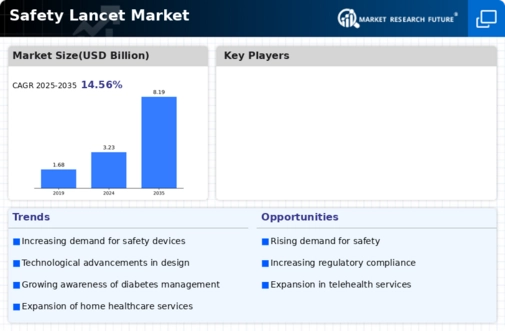
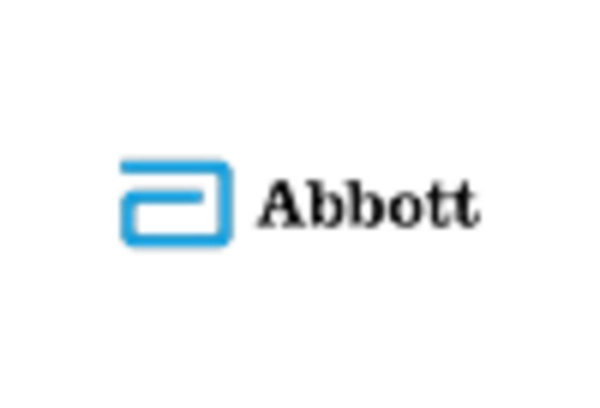
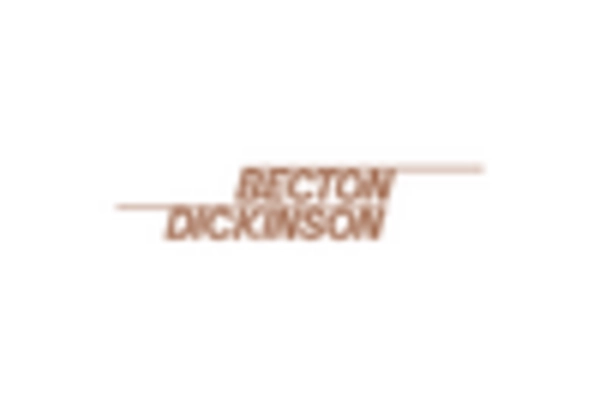
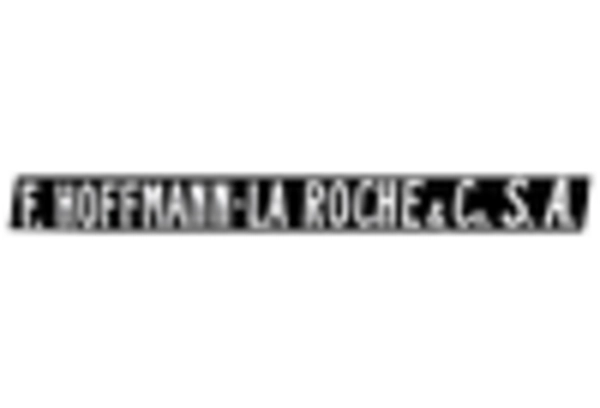
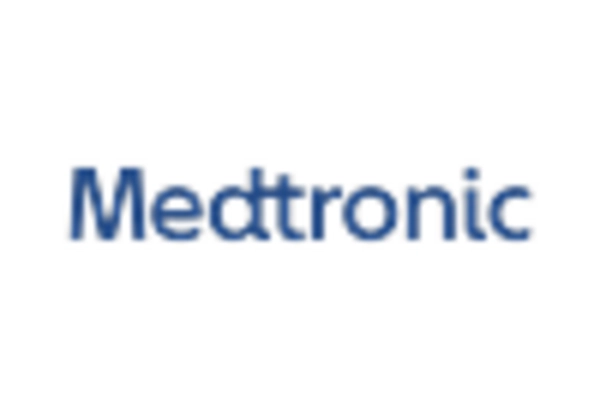
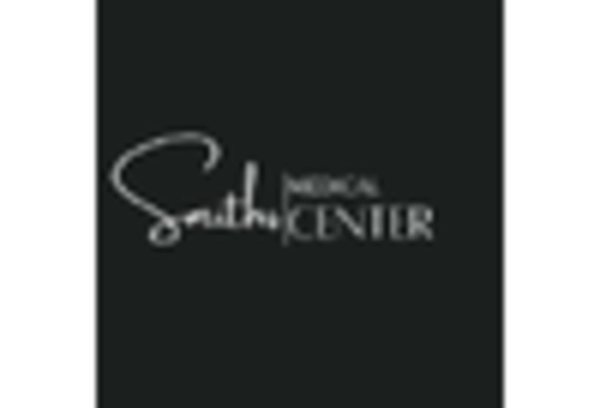
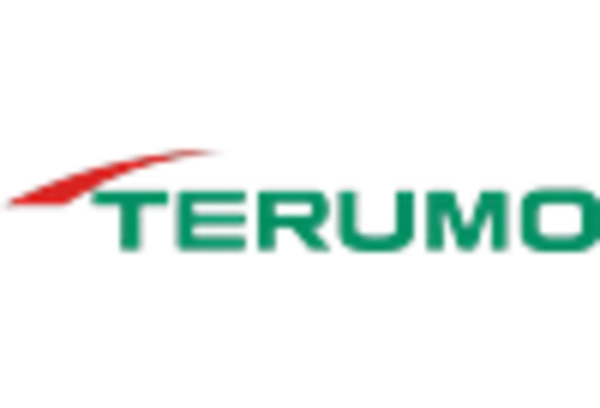

Leave a Comment